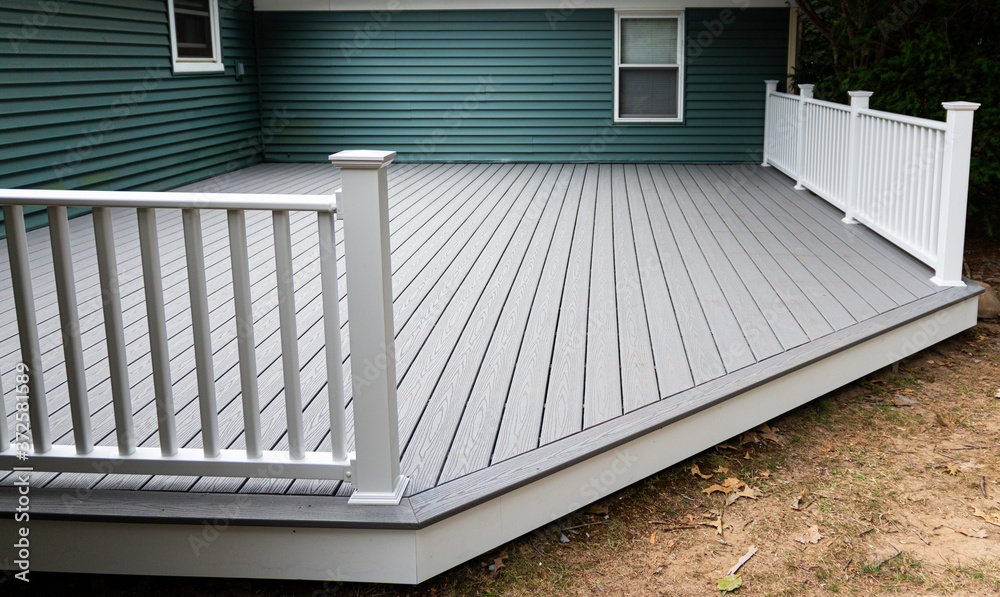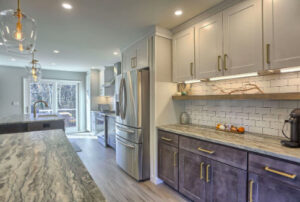A home deck extends your living space, a place to relax and entertain. With a few smart design ideas, it can become a focal point that separates your home from the surrounding landscape. A professionally built deck is an investment in your home’s value and a safe space for family and guests. Often, a deck requires specialized materials for its construction and regular maintenance. To find the deck that fits your home, visit https://deckbuilderscharleston.com/.

A small wooden deck is a great way to relax and enjoy the outdoors. It can provide a space for barbecues, dining, or just sitting and taking in the view. A small deck can also be a cozy place to read a book or converse with friends.
Before beginning construction, decide what the deck will be used for and consider any safety issues that may arise. Determine the deck’s size and height, ensuring it will maintain consistent proportions in the yard and house. If the deck will be attached to a home, check with the building inspector to ensure it meets any code rules for the area. Also, you may need a permit if the deck will be over a certain amount of square footage.
When choosing a material for your deck, look for a long-lasting, moisture-resistant product that is safe to walk on. A sturdier surface will also be less likely to warp or twist over time, making it a better choice for outdoor seating areas. The deck will need proper footings to spread the structure’s weight over a larger size and support posts to hold up the frame. These should be fastened to the top of the grounds using joist hangers and then connected with decking boards or slats.
Adding pretty planter boxes to your deck helps the space feel like an extension of your garden, and incorporating lighting in the design can help economize electricity costs. Using matching furniture pieces will make your deck look bigger and more cohesive. This deck idea from Tamsin Johnson Interiors includes a sleek in-ground hot tub that blends into the wooded backyard rather than being an eye-catching feature.
Planter boxes add interest and function to decks, adding color and texture to flat surfaces. They can be positioned next to windows as eye-catching focal points or lined up along sidewalks for a welcoming vibe. They also make for a great place to grow herbs and vegetables or flowers and shrubs.
Planters can be constructed from wood, brick, metal, fiberglass, and cellular PVC to suit different styles. The material you choose depends on the sun the location gets and the kind of plantings you wish to do. For example, vegetable gardens do best in full sunlight, while flower plants like petunias, geraniums, and nasturtiums thrive in partial shade.
Some designs are shaped like a hanging basket or sleigh, which are great for balconies or railings. Others have casters or wheels for easy mobility, making them ideal for decks and fire escapes. Some even have built-in seating to create a relaxing nook where guests can relax and read.
Window box planters look great when packed with blooms, or experienced gardeners can train climbing vines like ivy and creeping fig to cascade over the sides for a dramatic effect. For shady locations, impatiens are an excellent choice.
The length and depth of a planter are important to consider as well. For example, if you plan on growing vegetables, you’ll want to get a deeper farmer to accommodate the root systems. You’ll also need to think about the first and last frost dates and the amount of sunlight a location gets.
When selecting a planter, look for one with drainage holes in the bottom to avoid water pooling and rot. Also, opt for a design with removable sides to make adding and removing soil easier.
Cable railings are a popular alternative to traditional wooden or iron railings, especially for homeowners with balconies overlooking water or tall mountains. They provide the same safety as standard rails but don’t obstruct the view or block sunlight. They work well on decks, patios, and stairways. They also add a modern, contemporary feel to your home’s exterior.
The cables are securely held by posts made of glass, wood, or stainless steel. The railing components can be assembled in various ways, but most are joined using swaging. It involves using force to compress the fittings onto the cable, which creates a strong, durable connection that can hold up to significant weight.
While cable railings are visually striking, they are more expensive than other handrails. But their high-quality construction means they will last longer and look better for years. They are also easier to maintain than glass railings, which tend to develop cracks or stains over time.
Another advantage of cable railings is that they allow you to enjoy the breeze without obstructing your view. It can be important in areas that get a lot of rain, but it is also helpful when the temperature drops and you want to stay comfortable.
It is important to remember that if you install cable railings on a balcony, you must follow local codes that require a safety railing on balconies. The guidelines for these regulations will vary from region to region, but most will specify that the opening between the cables should not be wider than 4 inches. It is meant to prevent children or pets from accidentally falling through and ensure that birds can see and avoid the wires.
A hammock is a sling of fabric rope or netting suspended by two points that can be used for swinging, sleeping, or relaxing. It’s a popular feature of outdoor living, often associated with sunbathing and sipping iced drinks.
The classic hammock consists of two ropes or chains linked at their ends and suspended from solid support structures, such as trees or posts. If your backyard doesn’t have a suitable tree, or you don’t want to attach your hammock to trees, you can purchase a free-standing hammock stand that supports the hammock. These stands are usually 2 or 3 feet longer than the hammock and come with chains to bridge the gap between them.
Hammocks can be crafted from cotton, nylon, or polyester ropes. Most people find cotton more comfortable, as the strings stretch to conform to the body. However, cotton absorbs moisture, which can cause mildew, so cleaning your hammock is a good idea. Nylon and polyester are less susceptible to mold and tend to be more durable than cotton.
There are many fun add-ons for your hammock, such as a rain tarp or a bug net to keep gnat-size mosquitoes and other insects away from your back. Look for hammocks with a high denier number, which indicates how thick and sturdy the fabric is.
A home deck is a wonderful place to relax with family and friends or enjoy a bit of solitude. But it’s important to maintain your deck to ensure it’s safe and secure. Regular cleaning, proper materials, and a clear path underneath the deck help your investment last. And, of course, a well-maintained deck can significantly boost the resale value of your home.
A meditation or yoga space in your home offers a sense of serenity that can help you unwind and focus on your spirituality and physical well-being. You may have an entire room to devote to this practice, but a corner or nook in your house can also serve as a quiet spot that removes the day-to-day clutter and distractions.
When you design your meditation or yoga nook, opt for light, neutral colors that promote calmness and a peaceful vibe. Use simple furniture and decorations, such as a woven blanket or a tapestry, to add visual interest without distracting you from your practice. Add soothing scents, such as lavender, that are known to relax and calm the mind and body. Incorporate a few flora friends, such as palms and ferns, for an organic touch to improve indoor air quality and encourage relaxation.
A dedicated meditation or yoga nook is a great way to create a daily ritual of self-care and reflection, whether you’re just beginning your journey with this exercise or you’ve been practicing for years. Creating a designated space removes the temptation to skip your sessions. It motivates keeping up with your mindfulness routine, helping you feel relaxed and grounded even when you’re away from your zen spot.
Whether you prefer an open, bright studio space or a dark and cozy room, lighting plays a major role in how the area feels. A natural light source, such as a window or skylight, can bathe your space in warm sunshine and offer vitamin D, which can boost your mood and help you sleep better at night. A dimmer switch allows you to customize the ambiance depending on the time of day and your preferences.



 Renovating a kitchen can improve the overall function of a home. It also adds value to the property.
Renovating a kitchen can improve the overall function of a home. It also adds value to the property.